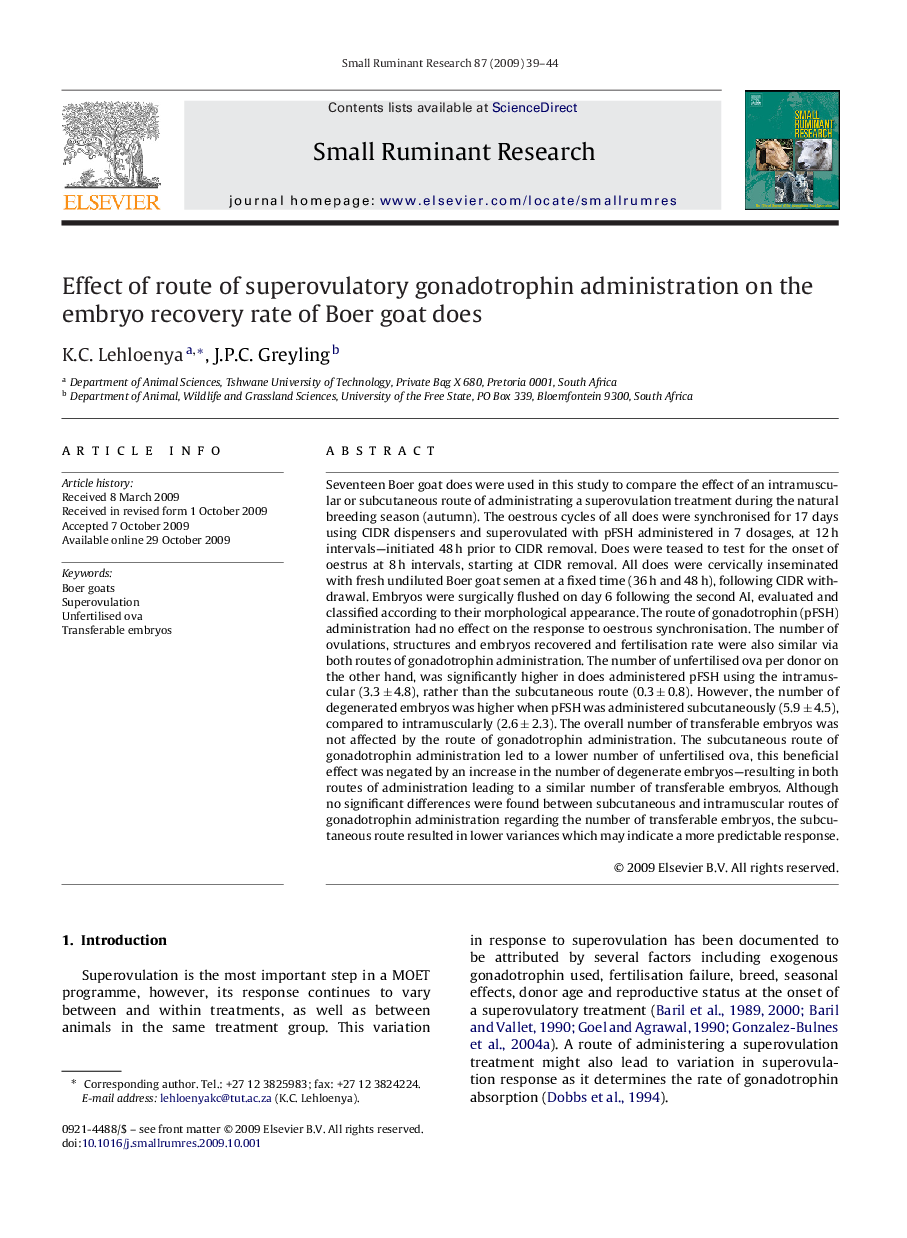| Article ID | Journal | Published Year | Pages | File Type |
|---|---|---|---|---|
| 2457675 | Small Ruminant Research | 2009 | 6 Pages |
Seventeen Boer goat does were used in this study to compare the effect of an intramuscular or subcutaneous route of administrating a superovulation treatment during the natural breeding season (autumn). The oestrous cycles of all does were synchronised for 17 days using CIDR dispensers and superovulated with pFSH administered in 7 dosages, at 12 h intervals—initiated 48 h prior to CIDR removal. Does were teased to test for the onset of oestrus at 8 h intervals, starting at CIDR removal. All does were cervically inseminated with fresh undiluted Boer goat semen at a fixed time (36 h and 48 h), following CIDR withdrawal. Embryos were surgically flushed on day 6 following the second AI, evaluated and classified according to their morphological appearance. The route of gonadotrophin (pFSH) administration had no effect on the response to oestrous synchronisation. The number of ovulations, structures and embryos recovered and fertilisation rate were also similar via both routes of gonadotrophin administration. The number of unfertilised ova per donor on the other hand, was significantly higher in does administered pFSH using the intramuscular (3.3 ± 4.8), rather than the subcutaneous route (0.3 ± 0.8). However, the number of degenerated embryos was higher when pFSH was administered subcutaneously (5.9 ± 4.5), compared to intramuscularly (2.6 ± 2.3). The overall number of transferable embryos was not affected by the route of gonadotrophin administration. The subcutaneous route of gonadotrophin administration led to a lower number of unfertilised ova, this beneficial effect was negated by an increase in the number of degenerate embryos—resulting in both routes of administration leading to a similar number of transferable embryos. Although no significant differences were found between subcutaneous and intramuscular routes of gonadotrophin administration regarding the number of transferable embryos, the subcutaneous route resulted in lower variances which may indicate a more predictable response.
